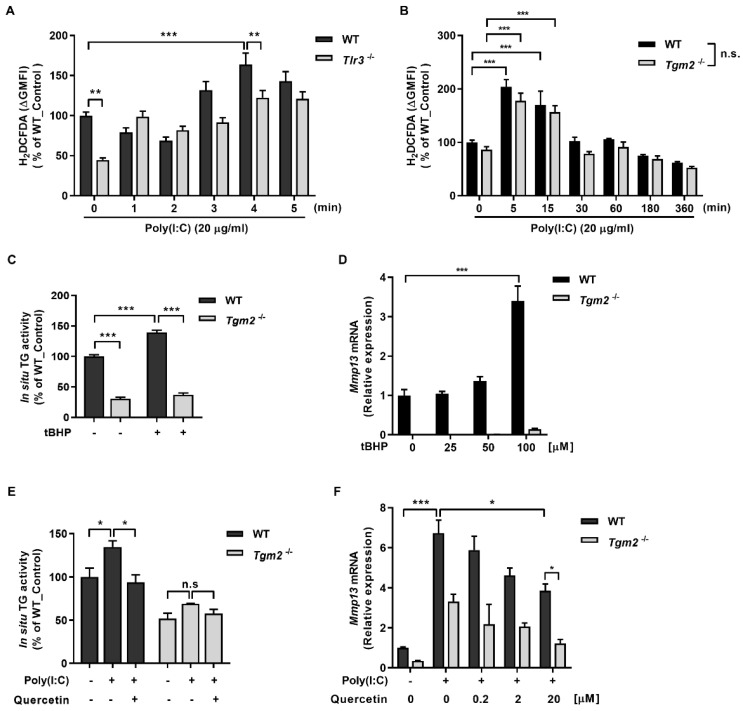Figure 4.
Poly(I:C) binding to TLR3 generates ROS that activates TG2. (A,B) Wild-type and Tlr3−/− (A) or Tgm2−/− (B) MDFs were treated with 20 µg/mL of poly(I:C) and harvested at indicated time. Levels of ROS in the cells were quantitatively measured by flow cytometry using DCFDA. (C,D) Wild-type and Tgm2−/− MDFs were treated with 100 µM (C) or various dose (D) of tert-butyl hydroperoxide (tBHP) for 12 h. The levels of intracellular TG activity (C, n = 3) and Mmp13 mRNA ((D), n = 3) were evaluated by BP incorporation assay and by qRT-PCR, respectively. (E,F) Wild-type and Tgm2−/− MDFs were treated with 20 µg/mL of poly(I:C) for 12 h. Effect of co-treatment with 20 µM (E) or various dose (F) of quercetin for 9 h on the levels of intracellular Tg activity ((E), n = 3) and Mmp13 mRNA ((F), n = 3) was evaluated by BP incorporation assay and by qRT-PCR, respectively. All data are represented as mean ± SEM. Statistical significance was tested by two-way ANOVA by Turkey’s post-test. *, p < 0.05; **, p < 0.01; ***, p < 0.001; n.s., not significant.

